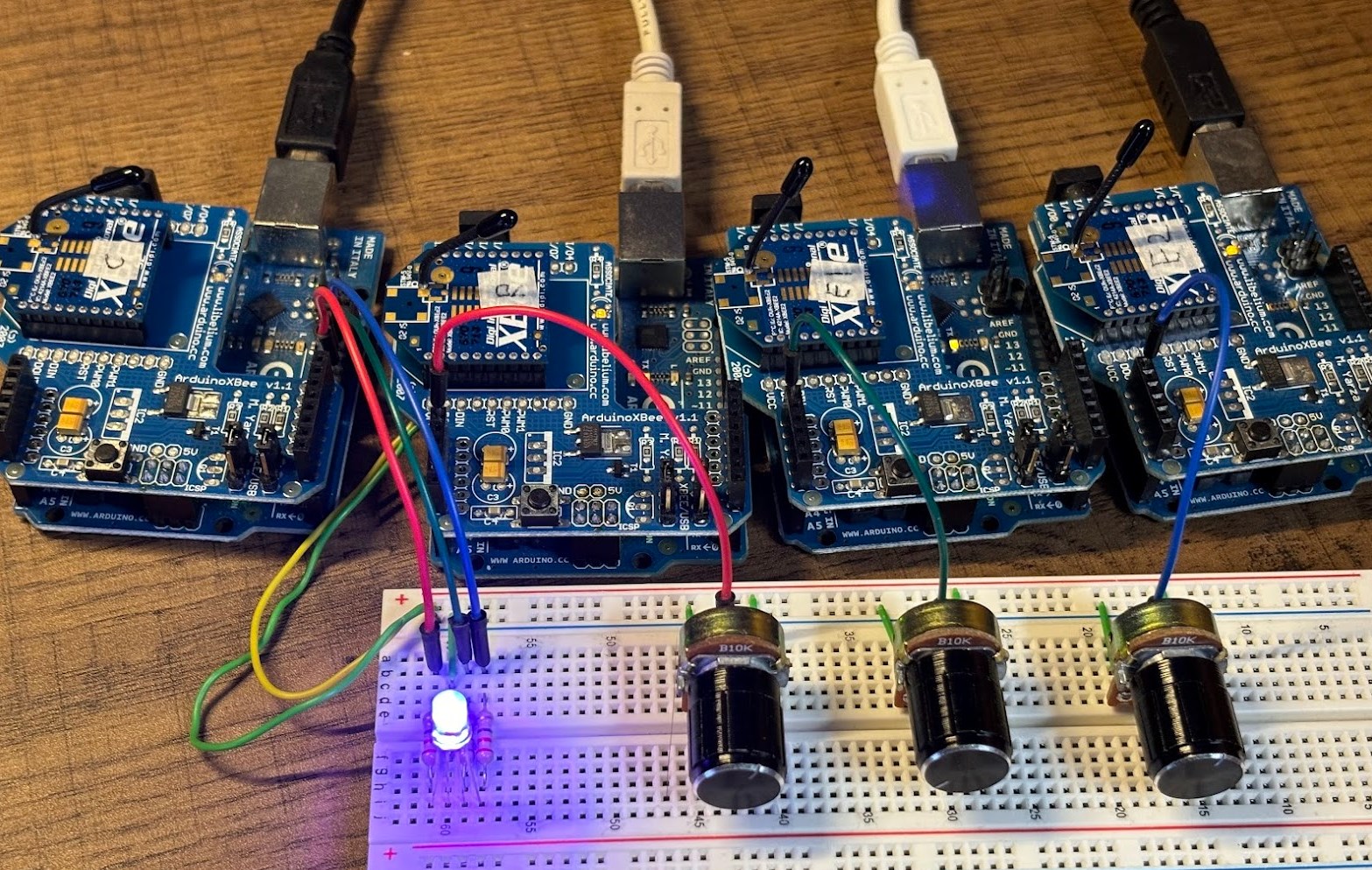Project Overview
The core objective of this project was to develop a network that could reliably and securely transmit data from various sensors to a central processing unit. Using a combination of Arduino Uno boards and XBee radio modules, the system reads sensor inputs, encrypts the data, and sends it across a wireless network to a coordinator unit. This coordinator then processes and utilizes the data to control an RGB LED, demonstrating a simple yet effective application of the received information.
Why This Project?
The motivation behind this endeavor stemmed from a desire to delve deeper into the mechanics of tactical data links commonly used in military and defense applications. By replicating a simplified version of these complex systems, I aimed to enhance my understanding of network protocols, data encryption, and the challenges of secure wireless communication.
Network Structure and ZigBee Configuration
The network architecture for this project is straightforward yet robust, consisting of one coordinator Arduino and multiple router Arduinos. The coordinator acts as the central hub, receiving and processing data from the routers, which function as nodes collecting sensor readings.
ZigBee was chosen as the communication protocol for its reliability and efficiency in creating mesh networks, which are ideal for scenarios where network integrity and flexibility are critical. The XBee modules, which operate on the ZigBee protocol, facilitate this mesh network setup, allowing for dynamic routing and redundancy, thereby enhancing the system’s resilience against interference and data loss.
Encryption and Security
Security is a crucial component of any data communication system, especially in a tactical setting. To safeguard the data transmitted across the network, AES encryption was implemented. Each piece of data sent from the sensors through the XBee network is encrypted before transmission and decrypted upon reception. This encryption ensures that sensitive data remains confidential, accessible only to authorized devices within the network.
Interesting Aspects of the Final Product
One of the most intriguing outcomes of this project is the practical demonstration of encrypted data transmission in a DIY setting, which typically is reserved for more advanced or professional applications. The use of common, accessible hardware like Arduino and XBee modules to achieve a level of security and reliability comparable to more sophisticated systems highlights the potential for innovation and application in various fields, including education and hobbyist projects.
The ability to control the RGB LED based on secure, wireless sensor data inputs effectively showcases how such technology can be applied in real-world scenarios, ranging from automated lighting systems to more complex control systems in industrial and defense applications.
Conclusion
This project serves not only as a technical exploration into the world of secure wireless communication but also as a bridge between complex theoretical concepts and tangible, practical applications. By leveraging simple components to achieve a high level of functionality, it underscores the accessibility of advanced technology and opens up myriad possibilities for future projects and innovations.


View the Repository on GitHub:
View on GitHub